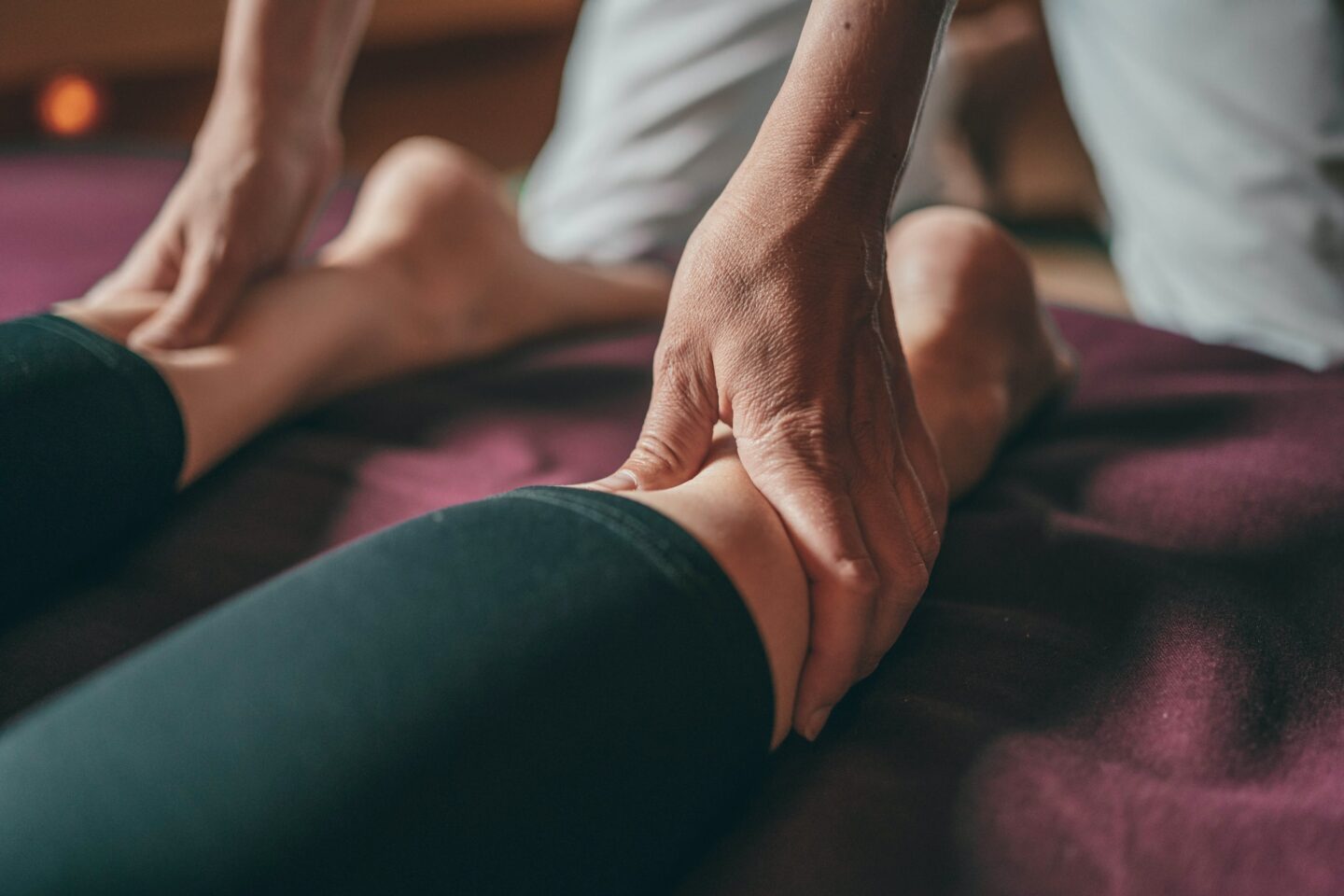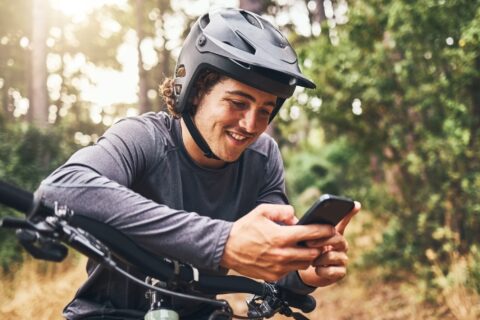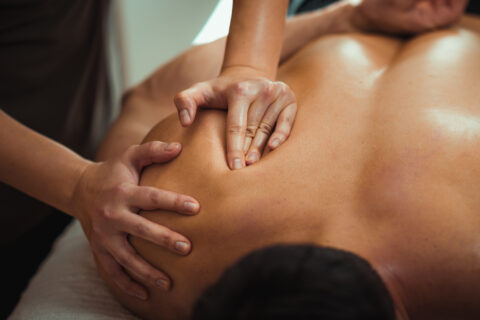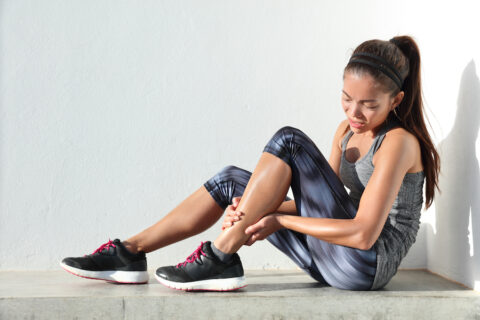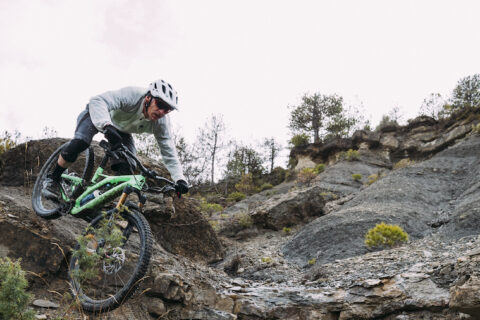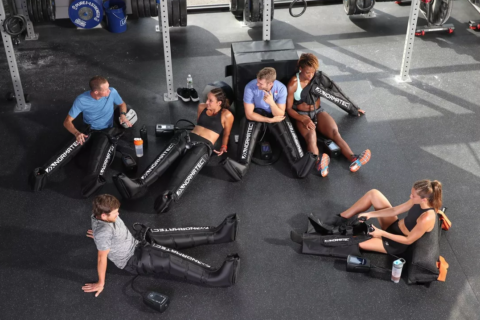Any good professional cycling documentary contains a scene with the pro lying on a massage table while the soigneur works his muscles. It’s so engrained in the European cycling culture that the message seems to have become: if you’re serious about your cycling, you need to get regular massages.
But what’s the science say? Is there any data to support the notion that massage will help you perform better? Surprisingly, the science isn’t clear.
“All we have now is clinicians giving us their own personal impressions as opposed to any systematic study,” says Dr. Peter Tiidus, the dean of Applied Health Sciences at Brock University.
Tiidus’s work focuses on muscle repair and recovery, which includes researching massage when the opportunity presents itself. In one study, his team measured many of the clinician-claimed benefits of massage in a group of runners spending 12 weeks training for a 10-kilometer race.
“Much to our surprise and disappointment, we saw absolutely no difference,” says Tiidus. “They reported the same amount of soreness, the same amount of pain, the same amount of beneficial effects of training adaptations.”
The myths of massage
Many of the longstanding theories about massage include the idea that it increases blood flow, which delivers more oxygen to the muscles and clears waste. Another belief is that massage helps remove lactic acid and, in turn, reduces soreness. Finally, some feel it generally improves muscle recovery.
Unfortunately, in assessments of the current research—including Tiidus’s review and a review by a team from New Zealand—the science simply hasn’t backed these claims. Multiple techniques to explore massage’s impact on blood flow, including ultrasound, found no change. In fact, one study indicated that massage may “impede blood flow.”
Likewise, while some studies have shown small improvements in soreness, muscle recovery doesn’t appear to improve with massage. “This has been done repeatedly in human models,” Tiidus says, “without any real major effect.”
The lactic acid theory itself has long since been thrown out. “We’ve known for a long time that lactic acid has absolutely nothing to do with muscle soreness because muscle soreness is an inflammatory response,’” Tiidus points out. (It’s also worth noting that lactic acid doesn’t actually exist in physiological quantities in the human body.)
The long-standing theories haven’t stood up to the research, but perhaps that’s the problem. These theories may all have been barking up the wrong tree.
“Maybe there’s things that we’re not measuring that we should be measuring better,” Tiidus says.
How inflammation is involved
Massage therapists firmly believe in the power of massage; intuition may be telling them it has something to do with the ability for massage to reduce inflammation, which causes soreness. The science is still catching up with that belief.
Tiidus, citing two studies from 2015—one in rabbits and one in humans—that looked at the effects of massage on muscle inflammation says they gave “tantalizing hints that massage does something.”
When we train hard, we damage our muscles. It’s the immune system that responds. White blood cells, such as neutrophils and macrophages, travel to the damaged tissue where they release inflammatory chemicals, breakdown the damaged parts, and signal muscle repair. While it causes soreness, you want this inflammation because it helps the repair process.
But it’s a bell-shaped curve according to Tiidus.
“There’s a happy medium,” he says. “If you get too many neutrophils coming in, you cause secondary damage. They start to injure some of the healthy tissue as well.”
On the flip side, if you reduce the inflammation, you may also inhibit the repair processes. So, reducing inflammation can be a good or bad thing depending on where you land on the bell-shaped curve.
In the rabbit study, massage reduced both neutrophil and macrophage flow to the injured muscles and sped up the repair process.
The human study found that massage shifted the balance in two of the chemicals released by white blood cells—called Nuclear Factor Kappa Beta (NF-κB) and Peroxisome Proliferator-Activated Receptor γ Coactivator 1α (PGC-1α). Both are a mouthful. All you need to know is that NF-κB slows muscle repair, while PGC-1α reduces inflammation and promotes the growth of our muscle’s aerobic power plants—mitochondria.
Massage reduced NF-κB and increased PGC-1α in the study promoting repair and preventing too much inflammation. “Which theoretically could be a good thing,” Tiidus says. “But this study didn’t go beyond two and a half hours of recovery.”
Perhaps that’s the biggest hurdle the science must overcome if it is to catch up. “[The research] is sort of done haphazardly,” Tiidus says. There simply isn’t a lot of money for massage research. There’s only small studies here and there.”
Based on the existing research, Tiidus says he wouldn’t discourage anyone from getting a massage, especially if an athlete finds it helpful. But if someone hasn’t done it before, he offers words of caution: “I wouldn’t necessarily spend $60 per hour.”
Pro cyclist Eric Young reminds us of the broader perspective. “I think there’s a thousand things that impact your performance and are important for recovery and racing. I think massage is just one more piece of the puzzle.”
Sadly, until science catches up, you’ll have to use your own best judgement whether massage is right, and cost effective, for you.
Get the most out of your massage
There may not be enough data to make any scientific recommendations, but that doesn’t necessarily mean massage won’t help. Here are some tips on how to get the most out of your massage.
Massage out the training stress
“When I’m really training hard,” Young says, “I’ll add a massage because I want to make sure I’m recovering as fast as I can.” Tiidus agreed it’s possible that heavy training may push us towards the over-inflammatory side of the bell-shaped curve.
In that case, massage could help. On the flip side, while the muscles get over-inflamed, heavy training can suppress our immune system globally, making us susceptible to illness. A study that looked at antibody levels found that massage restored some of this immune function.
Find the right therapist
Mechanotransduction is the process by which pressure and massage are translated into chemical signals and immune responses. A review of mechanotransduction practices found there were upwards of 75 different responses depending on the direction of the massage, pressure, and type.
So, how your massage is performed may be critical for a beneficial or detrimental immune response. Science has barely touched this. Therefore, it’s best to find a therapist who is experienced working with cyclists and comes well recommended—the hope being they are well ahead of the science.
Don’t wait too long
In both of the human studies of the immunological effects of massage, the benefits were greater when the massage was administered within two hours of damaging exercise. Likewise, macrophages appear to shift naturally into repair mode 48 hours after the damaging activity. At that point, anything that potentially inhibits the immune response in muscles, like massage, could be counterproductive.
Don’t replace the proven methods
Massage is not a replacement for things like recovery rides and stretching. While Tiidus agrees that improved blood flow should theoretically aid recovery, “it’s much easier to get increased blood flow just by doing very, very light exercise.”
Other studies found that stretching was more effective for recovery and range of motion than massage. One demonstrated that while stretching and massage alone had no impact, in combination they improved recovery. Try adding a short stretch after your massage.
Don’t exercise after massage
There are no studies that show benefits when massage is administered before exercise. If massage produces beneficial inflammatory effects, a hard workout will reverse all of them.
Foam rolling could be the poor man’s massage
Tiidus noted that the rabbit study used a mechanical massager that was more like a foam roller than a massage. Two recent studies showed that foam rolling reduced soreness and allowed runners to restore their full sprint speed sooner. Higher density foam with bevels appeared to increase the effects.
The right pressure
A good massage therapist won’t just rub your skin. However, if you’re grabbing onto the table and crying, Young says, “that’s probably doing a little bit of damage.” Young believes your body will let you know what’s right.
A massage study from 1993 found that overly vigorous massage increased the markers of muscle damage. More recently, it was shown that the degree of pressure had an impact on the balance between inflammation-promoting and repair-promoting macrophages.
The right direction
Our veins have small, one-way valves that prevent blood from pooling in our lower extremities. Massaging the veins in the wrong direction can damage these valves and cause varicose veins. So, when massaging your arms and legs, make sure the therapist is only applying pressure when massaging toward the heart.
The psychology of massage
All the science aside, there are psychological gains to massage. “I think it can help you mentally,” Young says. “Sometimes it’s just nice to sit there and force yourself to think about the race.”
A note on pain killers
In general, the same rules that apply to massage also apply to pain killers. NSAIDs like acetaminophen and ibuprofen block inflammation, which can be a good or bad thing depending on where you are on the bell-shaped curve.
At the right time they may prevent excess damage. However, use them at the wrong time and they can also block muscle repair. Interestingly, one study found that pain killers significantly reduced training adaptations when taken right after exercise.
References
- Best, T. M., Hunter, R., Wilcox, A., & Haq, F. (2008). Effectiveness of Sports Massage for Recovery of Skeletal Muscle From Strenuous Exercise. Clinical Journal of Sport Medicine, 18(5), 446–460. Retrieved from https://doi.org/10.1097/jsm.0b013e31818837a1
- Tejero-Fernández, V., Membrilla-Mesa, M., Galiano-Castillo, N., & Arroyo-Morales, M. (2015). Immunological effects of massage after exercise: A systematic review. Physical Therapy in Sport, 16(2), 187–192. Retrieved from https://doi.org/10.1016/j.ptsp.2014.07.001
- Tiidus, P. M. (2015). Alternative treatments for muscle injury: massage, cryotherapy, and hyperbaric oxygen. Current Reviews in Musculoskeletal Medicine, 8(2), 162–7. Retrieved from https://doi.org/10.1007/s12178-015-9261-3
- Waters-Banker, C., Dupont-Versteegden, E. E., Kitzman, P. H., & Butterfield, T. A. (2014). Investigating the Mechanisms of Massage Efficacy: The Role of Mechanical Immunomodulation. Journal of Athletic Training, 49(2), 266–273. Retrieved from https://doi.org/10.4085/1062-6050-49.2.25
- Weerapong, P., Hume, P. A., & Kolt, G. S. (2005). The Mechanisms of Massage and Effects on Performance, Muscle Recovery and Injury Prevention. Sports Medicine, 35(3), 235–256. Retrieved from https://doi.org/10.2165/00007256-200535030-00004

